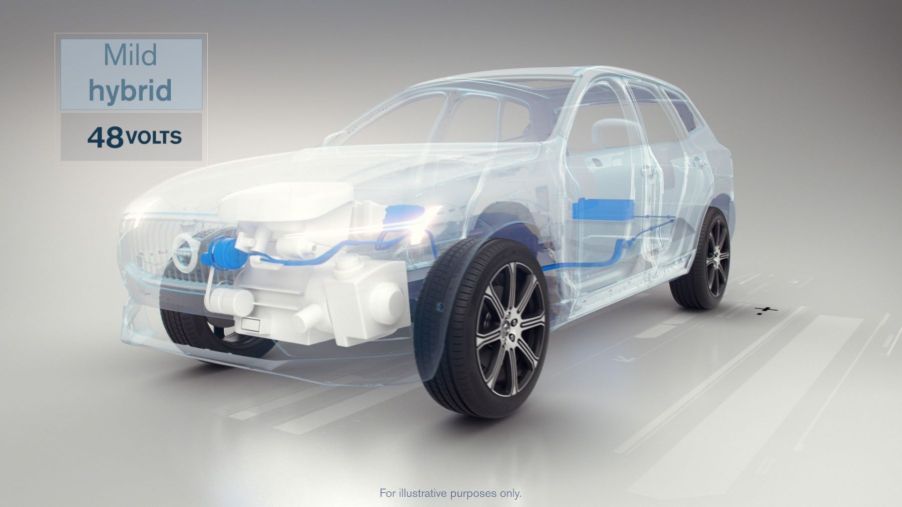
The 4 Types of Hybrid Cars: What’s the Difference?
Automotive technology has come a long way in the last century, and one of the most significant advancements has been the rise of hybrid cars. As fuel prices continue to rise and environmental concerns mount, automakers are under pressure to develop more fuel-efficient vehicles. Hybrid cars offer a unique solution that combines the best of both worlds: the efficiency of an electric vehicle with the range and power of a gas-powered car. However, did you know that there’s more than one type of hybrid car?
What is a hybrid car?
CarBuzz defines a hybrid car as “a vehicle that uses more than one power source with each operating independently.” In most cases, this means a gasoline engine and an electric motor. The electric motor is powered by a battery pack that assists the gas engine when accelerating. This helps to improve fuel economy.
Types of hybrid vehicles
Hybrid technology is only improving with each new generation of hybrid cars. The latest hybrids offer significantly improved fuel economy, more power, and a much smoother ride than the early hybrid models. Motor Lease explains that there are four main types of hybrid vehicles today: mild hybrids, full hybrids, plug-in hybrids, and EVs with range extender hybrids.
1. Mild hybrids

Mild hybrids are the latest innovations and the least expensive in hybrid technology. A mild hybrid uses a traditional gasoline engine, electric motor, and battery pack. The electric motor assists the gas engine when accelerating and powers the vehicle’s accessories.
Also referred to as 48-volt mild-hybrid systems, the battery pack doesn’t require a plug-in system. Instead, it’s recharged through regenerative braking.
Examples of mild hybrid systems include Volvos with its ISG system and the Mercedes-Benz C-Class.
2. Full hybrids
Full hybrids are similar to mild hybrids but with a more powerful electric motor and battery pack. The electric motor can power the vehicle on its own for short distances, usually at low speeds. The gas engine kicks in when more power is needed, such as when accelerating or climbing a hill.
Full hybrids are available in two different varieties: parallel and series.
Parallel hybrids have a gas engine and electric motor connected to the transmission. The electric motor can power the vehicle on its own or assist the gas engine when accelerating.
Series hybrids have an electric motor that powers the transmission, while the gas engine powers a generator that charges the battery pack.
Examples of full hybrids include the BMW i8, Toyota Avalon Hybrid, and Honda CR-V hybrid.
3. Plug-in hybrids (PHEVs)
As the name suggests, plug-in hybrid cars can be plugged into an outlet to charge the battery pack. PHEVs have a larger battery pack than mild or full hybrids, which allows them to travel further on electric power alone. Most PHEVs can travel between 10 and 50 miles on electric power before the gas engine kicks in.
PHEVs are available in various body styles, including sedans, hatchbacks, and SUVs. Some examples of PHEVs are the Toyota RAV4 Prime, BMW 330e iPerformance, and Cadillac CT6 PHEV.
4. EVs with range extender hybrids
Range-extended electric vehicles are similar to PHEVs but with a small gasoline engine to generate electricity. This allows the car to travel further on electric power alone. The gas engine is only used when the battery pack is depleted, which extends the range of the vehicle.
The Chevy Volt is an example of an EV with a range extender hybrid. It has an electric motor that powers the transmission and a small gas engine that charges the battery pack. The Volt can travel up to 53 miles on electric power before the gas engine kicks in.
Benefits of owning a hybrid car
There are many benefits to owning a hybrid car, including improved fuel economy, lower emissions, and tax breaks.
Generally, mild hybrids can improve fuel economy by up to 10%, while full hybrids can improve it by up to 30%. PHEVs can travel further on electric power alone, using even less gasoline.
Hybrid cars also produce lower emissions than traditional gasoline cars. This is because they rely on electric power, which produces zero emissions. Hybrid cars also have smaller engines, which further reduces their emissions.
Many hybrid cars are eligible for tax breaks and other incentives. The federal government offers a tax credit of up to $7,500 for certain hybrid and electric vehicles. Some states offer additional incentives, such as HOV lane access and reduced registration fees.


